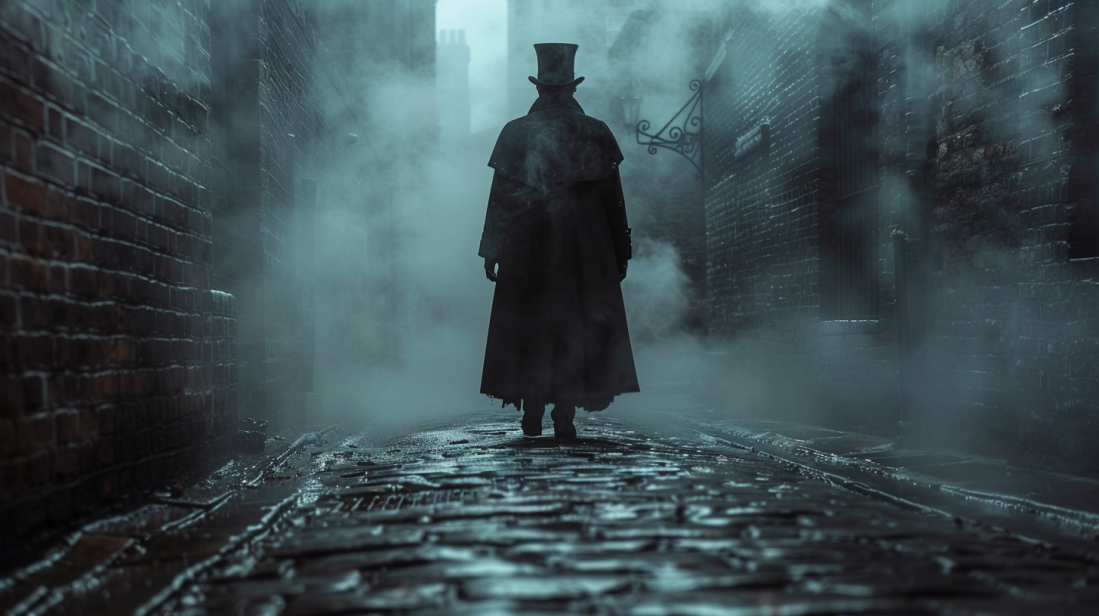Introduction
In 1888, a series of brutal murders in London’s Whitechapel district were attributed to a mysterious figure known as Jack the Ripper. Despite numerous suspects and extensive investigations, the true identity of Jack the Ripper remains unknown. This case continues to captivate the public and inspire endless speculation.
The Whitechapel Murders
The Whitechapel murders were a series of gruesome killings that took place in the East End of London. The victims were primarily women involved in prostitution, brutally murdered and mutilated. The brutality of the crimes and the lack of a clear suspect led to widespread panic and fascination.
The First Murder
The first known victim attributed to Jack the Ripper was Mary Ann Nichols, found on August 31, 1888. Her throat had been slashed, and her abdomen mutilated. The initial police response was swift, but they faced challenges due to the lack of forensic technology and the chaotic environment of Whitechapel.
The Canonical Five
The “Canonical Five” refers to the five victims most commonly attributed to Jack the Ripper:
- Mary Ann Nichols
- Annie Chapman
- Elizabeth Stride
- Catherine Eddowes
- Mary Jane Kelly
Each murder displayed similar brutal methods, including throat slashing and abdominal mutilation, suggesting a single perpetrator.
Murder Methods and Patterns
Jack the Ripper’s modus operandi included attacking victims in secluded areas, using a sharp knife to slash their throats and mutilate their bodies. The precision of the mutilations led some to speculate that the killer had anatomical knowledge, possibly a surgeon or butcher.
The Letters from Jack the Ripper
Several letters were sent to the police and media, purportedly from Jack the Ripper. The most famous is the “Dear Boss” letter, which first used the name “Jack the Ripper.” While the authenticity of these letters is debated, they contributed to the public frenzy and the killer’s enduring legend.
The Investigation
The investigation into the Whitechapel murders faced numerous obstacles, including limited forensic capabilities and public pressure. Key figures included Chief Inspector Frederick Abberline and Sir Charles Warren, Commissioner of the Metropolitan Police. Despite their efforts, the case went unsolved.
Suspects
Numerous suspects have been proposed over the years, each with varying degrees of plausibility. The main suspects include:
Montague John Druitt
Montague John Druitt was a barrister and teacher whose suicide shortly after the last murder led some to suspect him. However, there is little concrete evidence linking him to the crimes.
Aaron Kosminski
Aaron Kosminski, a Polish immigrant with a history of mental illness, has been a key suspect. DNA evidence from a shawl found near one of the victims suggested a possible link, but the evidence is not conclusive.
Other Notable Suspects
Thomas Cutbush: A medical student with a violent history.
Michael Ostrog: A Russian criminal and physician.
Other Lesser-Known Suspects: Various other individuals have been proposed, but none have been definitively proven to be the Ripper.
The Impact on Society
The Jack the Ripper murders had a profound impact on London society. The media coverage and public fear led to increased scrutiny of the police and living conditions in the East End. The case highlighted issues of poverty, crime, and the limitations of law enforcement.
Theories and Speculations
Many theories have been proposed about Jack the Ripper’s identity, ranging from plausible to outlandish. Some suggest he was a member of the British royal family, while others propose various doctors or immigrants. These theories often reflect societal biases and fears of the time.
Modern Investigations
Advances in forensic science have allowed for new investigations into the Jack the Ripper case. DNA analysis, criminal profiling, and modern detective methods have provided new insights, though a definitive solution remains elusive.
Cultural Impact
Jack the Ripper has left an indelible mark on popular culture. He has been featured in countless books, films, and television shows, often depicted as a symbol of Victorian-era fears and the darker side of humanity. The Ripper’s legacy continues to fascinate and horrify.
Conclusion
The mystery of Jack the Ripper endures, a blend of historical fact and myth. Despite extensive investigations and numerous theories, the true identity of the Ripper remains unknown. This enduring enigma continues to captivate, reflecting our fascination with the unknown and the macabre.
FAQs
How many victims did Jack the Ripper have?
Jack the Ripper is most commonly attributed with five victims, known as the Canonical Five, though some believe he may have had more.
Why is Jack the Ripper so infamous?
Jack the Ripper’s infamy stems from the brutal nature of the murders, the mystery of his identity, and the extensive media coverage at the time.
Have any suspects been definitively proven to be Jack the Ripper?
No, despite numerous suspects and extensive investigations, no one has been definitively proven to be Jack the Ripper.
What advancements have been made in the investigation?
Modern forensic science, including DNA analysis and criminal profiling, has provided new insights but has not conclusively solved the case.
How has Jack the Ripper influenced modern culture?
Jack the Ripper has influenced modern culture through numerous books, films, and TV shows, becoming a symbol of mystery and horror.

